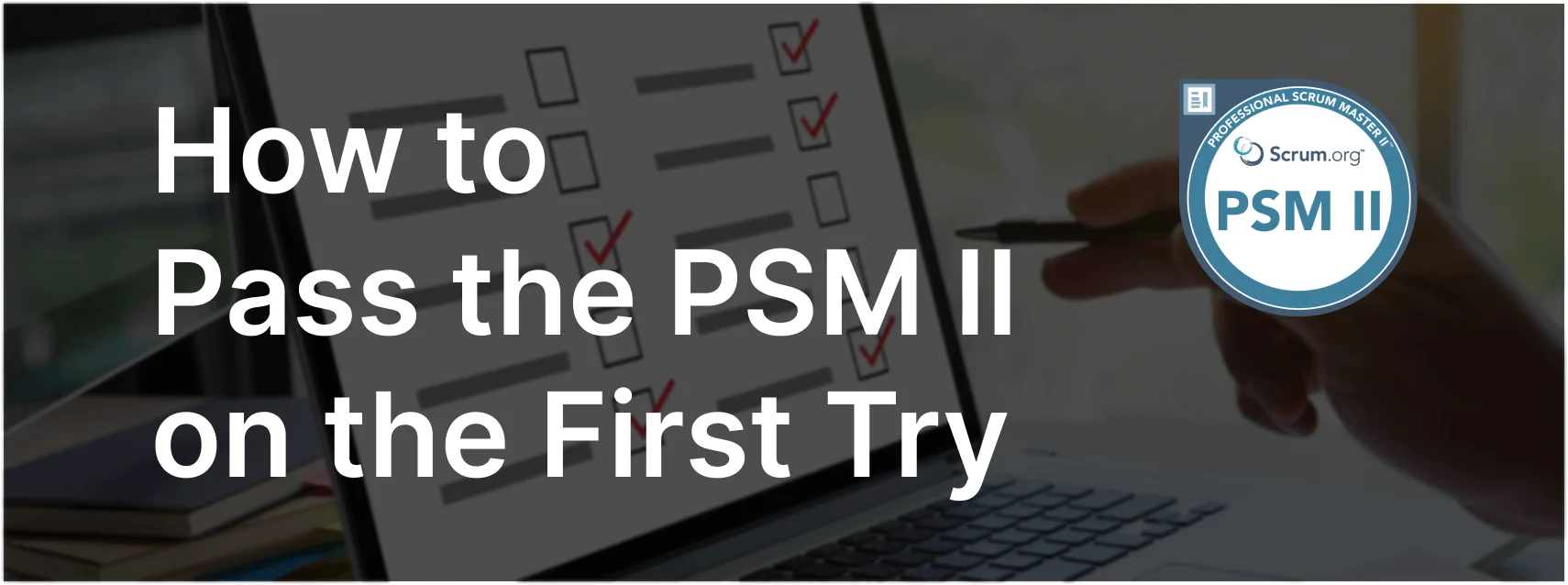Ensuring Scrum is Understood and Enacted
A key responsibility of the Scrum Master is to ensure that Scrum is understood and properly enacted within the organization. This involves various strategies and approaches to educate and coach both the Scrum Team and the broader organization. This article explores a specific exam question about acceptable ways a Scrum Master may work to achieve this goal, providing detailed explanations and insights relevant to the PSM II exam.
Exam Question
What are acceptable ways a Scrum Master may work to ensure Scrum is understood and enacted? (choose the best three answers)
- A. Require senior management to mandate that all teams in the organization must follow and enact Scrum.
- B. Arrange one-to-one coaching sessions where concerns the Scrum Master has identified can be discussed.
- C. Schedule group training about Scrum.
- D. Hold longer, more in-depth retrospectives with formal learning as part of the retrospective.
- E. Educate stakeholders and customers about Scrum.
Correct Answers
B. Arrange one-to-one coaching sessions where concerns the Scrum Master has identified can be discussed.
C. Schedule group training about Scrum.
E. Educate stakeholders and customers about Scrum.
Explanation
Correct Answers
B. Arrange one-to-one coaching sessions where concerns the Scrum Master has identified can be discussed: Personalized coaching sessions allow the Scrum Master to address specific concerns and knowledge gaps identified within the team or organization. This tailored approach helps individuals understand and apply Scrum principles effectively in their context.
C. Schedule group training about Scrum: Group training sessions provide an opportunity to educate multiple team members and stakeholders about Scrum. These sessions can cover Scrum principles, roles, events, and artifacts, ensuring everyone has a shared understanding of the framework.
E. Educate stakeholders and customers about Scrum: Educating stakeholders and customers is crucial for aligning their expectations and understanding of Scrum. This helps create a supportive environment where Scrum can be effectively implemented, and it ensures that stakeholders understand their role in the Scrum process.
Incorrect Answers
A. Require senior management to mandate that all teams in the organization must follow and enact Scrum: While senior management support is important, mandating Scrum without proper education and buy-in can lead to resistance and poor implementation. Effective Scrum adoption requires understanding, support, and willingness from all levels of the organization.
D. Hold longer, more in-depth retrospectives with formal learning as part of the retrospective: While retrospectives are important for continuous improvement, making them longer and more formal may detract from their purpose. Retrospectives should remain focused on inspecting and adapting the team’s process. Formal learning can be addressed in separate training sessions.
Responsibilities in Scrum
- Scrum Master: The Scrum Master is responsible for coaching the Scrum Team and the organization on Scrum practices and principles. They facilitate understanding and proper enactment of Scrum, helping the team and stakeholders embrace the framework.
- Product Owner: The Product Owner works with the Scrum Master to ensure that stakeholders understand their role and the value of Scrum. They help communicate the importance of Scrum in delivering valuable product increments.
- Developers: Developers participate in training and coaching sessions to deepen their understanding of Scrum. They collaborate with the Scrum Master and Product Owner to continuously improve their processes and practices.
Relevance to the PSM II Exam
Understanding the acceptable ways a Scrum Master can ensure Scrum is understood and enacted is crucial for the PSM II exam. It demonstrates advanced knowledge of Scrum principles and effective coaching and training strategies. Mastering this concept ensures that Scrum Masters can effectively guide their teams and organizations in adopting Scrum practices.
Key Takeaways
- One-to-one coaching sessions allow for personalized and effective learning.
- Group training sessions ensure a shared understanding of Scrum across the team and organization.
- Educating stakeholders and customers fosters a supportive environment for Scrum implementation.
- Mandates without proper education can lead to resistance and poor implementation.
- Retrospectives should remain focused on inspection and adaptation, with formal learning addressed separately.
Conclusion
Ensuring that Scrum is understood and enacted within an organization requires a combination of personalized coaching, group training, and stakeholder education. These strategies help build a shared understanding of Scrum principles and practices, fostering a supportive environment for effective Scrum implementation. Understanding these principles is crucial for effective Scrum implementation and success in the PSM II exam. For comprehensive preparation and practice exams, check out PSM II Exam Prep to enhance your understanding and application of Scrum principles.



